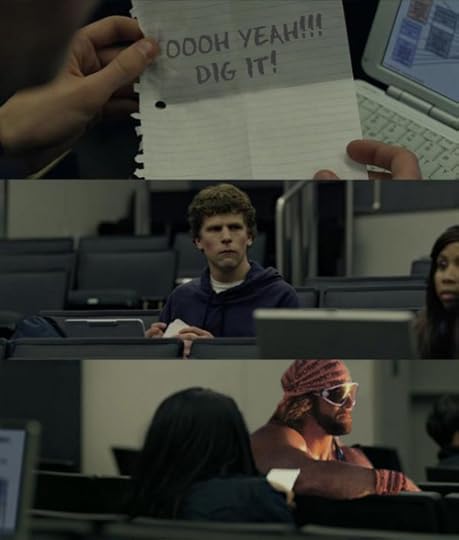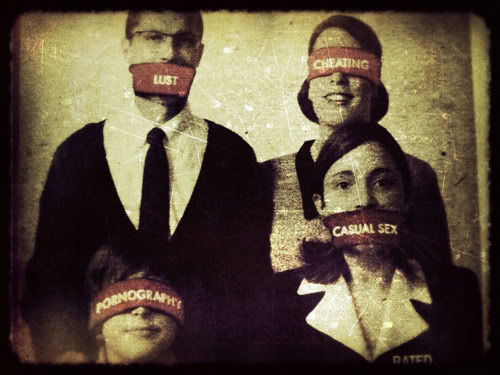Sawyer Paul's Blog, page 209
April 17, 2011
When I switched the podcast feed from Footnotes to Aggressive...

When I switched the podcast feed from Footnotes to Aggressive Art, i lost just about everyone. So please, subscribe again using Feedburner. It'll be up on iTunes in a few days.
This week's episode of the Aggressive Art podcast, Thomas Holzerman of The Wrestling Blog comes on to talk Chikara King of Trios, Japanese Style, "fighting spirit," UFC, blood and blading, Jake Roberts, Dying in a wrestling ring, where's randy savage, taking a bow for your performance, and fan reaction making a difference.
Andre Davis and Blood in Wrestling by Stephen T Stone
Along with the untimely death of Larry Sweeney, the independent wrestling scene received more shocking news this week with the arrest of Andre Davis, a Cincinnati-area performer; his arrest is for "felonious assault" following a string of sexual encounters where Davis did not disclose he had HIV—which he likely did not disclose to anyone who worked with him in numerous matches in the past where he had been openly bleeding. Davis' arrest and disclosure of his disease is a lesson to the industry, in more ways than one.
…[W]restling is, shockingly, behind the adult film industry in terms of blood testing. Since professional wrestling is often classified more as a form of "athletic performance art" than a sport, state sports commissions turn a blind eye to the industry and allow its performers to work without blood tests or other similar health tests. Davis' arrest may change this in the future, especially since WWE has gone out of its way to prevent their workers from openly bleeding in any way.
Speaking of WWE, I doubt they will ever allow "blading" to happen in their productions again unless they get clean blood tests from any performers who would be involved and approve of it well beforehand. Their safety measures and Wellness Program, while decried by a subsect of fans, have done more to save wrestlers and prevent things like this from happening than they have done to "ruin" the industry or their shows; Edge's life may have been saved by these very same measures.
I never, ever want to see blood in a wrestling match again, and I don't consider anyone who does to be a fan of this art form.
If you need to bleed for real (or, for that matter, hurt yourself or someone else for real) so people will believe you when you pretend to be hurt, you're a shitty professional wrestler.
April 16, 2011
The excellent intro to tomorrow's Lockdown show
10 bucks says it's the best part.
I love me a good Tumblr coincidence.

I love me a good Tumblr coincidence.
April 15, 2011
Funniest thing I've seen all week.

Funniest thing I've seen all week.
sarahinthestars:
The modern family.
This is an old article, but it's a good piece:
For...

This is an old article, but it's a good piece:
For centuries, artists such as Francisco Goya and the Viennese Actionists of the 1960s have pushed the envelope in terms of violent content in art, and challenged what some deem obscene or offensive. Headlines are made annually linking the glorification of violence in the media to school shootings and street murders. Questions are raised: what effect does violent art have on society? How should such expression be moderated? And who is best to make these decisions?
These decisions are part of Seamus Kealy's everyday life. The curator of the Blackwood Gallery, at the University of Toronto at Mississauga, Kealy enjoys the freedom of what is practically a total lack of boundaries as to what can be exhibited. "I don't really have much concern about showing anything. I think that I can show, in different ways, almost anything," he says, but clarifies, explaining that context and purpose are everything.
This is the gallery from my old campus.
This begs another question: if depicted violence isn't harmful, does it have a positive effect? To resort to a well-tread phrase, is such violence cathartic? "Sure. Why not?" Kealy responds reluctantly. "Why do we have violence on television? Why do people watch it?' We need it. People would hate to admit it, but we need it.
April 14, 2011
The conversation of aggressive art
This is the first of a series of articles opening up the dialogue I want to have with this website. Forever, I've been interested in fringe theatre, transgressive fiction, professional wrestling, pornographic academia (the dialogue in and around porn by smart people with degrees on their walls, just to clarify) illegal art, underground politics, etc. It's all incredibly fascinating stuff. When I look at my bookshelf, my mp3 player, my movie collection, it reflects this. I'm not interested in mainstream consumer culture. I'm interested in counter-culture consumer culture. I get the ironies and difficulties of that. I'm sure a lot of you are. And I'm sure a lot of you would like to dig deeper.
I do like that this sort of art (from here on, music, movies, etc, will just be referred to as art. As thorny as that reduction is, it's just much easier to type) is capable of cutting into preconceptions, changing behavior, and offending parts of us we had never considered important. If the mainstream product is pabulum, counter-culture product is adrenaline: energizing, natural, and dangerous.
From . Taboos meant (and sometimes marketed) for secret and guilty enjoyment change over time as well. So in any period of time, you have a mix of what is appropriate, what isn't, and what is so long as you feel a little guilty about it, and these things are constantly shifting.
I'm going to blog about what fits into those three bins in this era of course, but also what happened in the past, and what might happen in the future. The conversation will move from commerce to appreciation and back, I'm sure. And I'll likely offend some, but you should kind of know what you're going to get by the marquee. I'll also work on getting better at concluding paragraphs.
wosmith:
the beauty in Goddard's films is that everything...
the beauty in Goddard's films is that everything starts out so simply, like the dancing in this scene. But then the dance becomes a narrative; questioning, doubting, lost and wandering, wondering. But it is all so simple. C'est très chic.
Repetitious dance, interrupted by minute swaths of random thought, struck to music that starts and stops without precise trimming. It invokes chaos, boredom, loneliness, and the false hope of intimacy with people you only think you know. And in the end, as with so many films of this sort, it has to end in madness and fire.
picasso's erotic code
Picasso's Russian wife, Olga, a former ballerina and the mother of their son, Paulo, had begun to suffer from a nervous disorder that her pathological jealousy, resulting from her husband's nonstop infidelities, made infinitely worse. Picasso would have to keep Marie-Thérèse hidden. Since Olga was always on the lookout, Marie-Thérèse's first appearances in his work are in somewhat erotic code: as a guitar waiting to be played, as the boomerang-shaped collar and cuffs she bought the day they met, and as her initials, bifurcated by his. Picasso was more in love than he had ever been.
I'm finding as I get older Vanity Fair is becoming a much better read. Could just be me.




